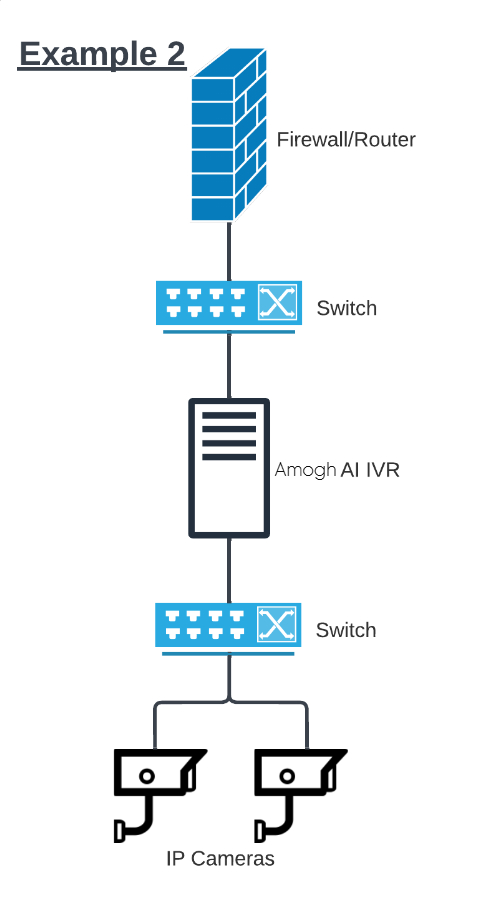The Amogh AI appliance needs access to both the internet and your camera network in order to function. Below are a few examples of the most common network topologies. Note that each black line in the diagrams represents an ethernet connection. They are ranked based on their complexity from low to high.


.jpg)